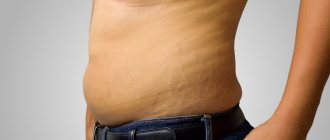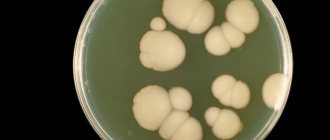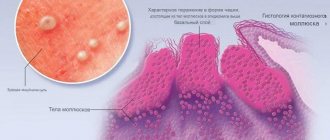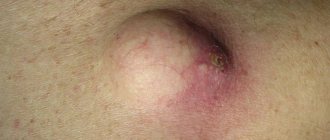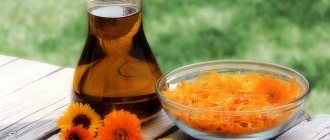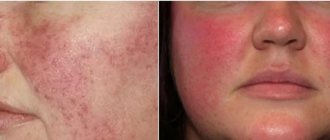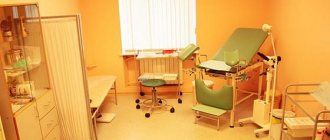What kind of parasite is a body louse?
Lice are divided into 3 types:
- pubic;
- head;
- wardrobe
What all types of lice have in common is rapid reproduction. At the same time, they create discomfort for the infected person and are carriers of infections.
The linen louse is small in size with a thickening in the center of the body. The length of an adult is 3-5 mm . The color is light gray or light yellow. There are no wings - this prevents them from moving long distances. The larvae of linen or body lice resemble adult individuals, only of a miniature size of 1-2 mm. Full development occurs after 3 moults have passed.
The optimal reproduction process occurs at high temperatures up to 30˚ C. Low temperatures (15˚ C) have a negative effect on reproduction and growth. The killing temperature for insects is plus 60˚ C and below minus 13.
The lifespan of males is up to 30 days. Whereas females exist for 45 days. During this period, one female lays 140 nits . As soon as the larvae emerge from the egg, they begin to suck blood once a day. At the same time, the first molt occurs, the second - after 5 days, the third - after 8.
The complete growth cycle from egg to subsequent reproduction is 16 days. The process of reproduction is repeated again. Two months are enough to increase the size of the colony several hundred times . Therefore, it is necessary to begin the fight against parasites in a timely manner.
Photo
Lice under a microscope
Under a microscope, you can see the full structure of lice. It is noteworthy that body and hair lice can often have a translucent structure, which allows you to fully see the location of their internal organs.
You should not take a drunk brown or red specimen for research. Blood will not allow you to properly examine the experimental insect.
INTERESTING: It will be quite difficult for an inexperienced researcher to distinguish lice from lice-eaters without a microscope. But you can be sure of one thing: if an insect was removed from a person for study, then it is a louse.
What is body lice?
The difference between body lice and other diseases is that lice do not live on the body, but hide in the seams of clothing. Although, without humans they do not exist. After all, they feed exclusively on the blood of the owner. Insects suck on it 4 times a day.
It is at the moment of hunger that parasites leave their home and move onto the body. Having had enough, they crawl back into clothes or bedding. The appearance of a well-fed parasite is very similar to a flea. Since the abdomen becomes burgundy in color, but they do not know how to jump, but crawl slowly.
Outbreaks of linen lice mark times during military operations. During this period, people are not able to properly monitor their body hygiene, and clothes are changed at the wrong time. IDPs who have to live in tents with a large number of people are also susceptible to this disease.
Reasons for appearance
When asked what linen lice are and how to get rid of them, you should not immediately advise general cleaning. Where do they come from? Here are the most popular places:
- A store where clothing is tried on.
- Hotel room.
- Going to visit.
- Any public transport where there is frequent contact with various strangers.
- Various tourist trips, during which you have to share one tent with someone.
It should be noted that these parasites are very hardy. They can survive even a couple of days without their usual environment. After just a couple of individuals enter their familiar environment, their immediate reproduction begins. Those who do not make do with the same underwear, have a fairly large wardrobe, and also change their clothes as often as possible are reliably protected from these annoying parasites. Thus, if a louse lives on clothing, it will die of hunger for a certain time if the person does not put this thing on again. In almost all cases, prisoners, as well as people without a fixed place of residence, have linen lice. Therefore, you should be very careful when dealing with such people.
Body lice bites
Linen lice affect the part of the body where there is no hair:
- groin;
- stomach;
- axillary areas;
- shoulders;
- neck;
- buttocks;
- small of the back;
- breast;
- upper back;
- waist.
Bite symptoms:
- the appearance of bluish spots on the body;
- headache;
- nausea;
- nervousness;
- itching near the bitten area;
- elevated temperature;
- intestinal disorder;
- allergy;
- pustules;
- healing of the bite after 4 days.
Photo
Preventive measures
To avoid encounters with such unpleasant insects as body louse, you should strictly observe personal hygiene. This especially applies to those places where the danger is great - hotels, sanatoriums, trains, etc. Under no circumstances should you use someone else's underwear, clothes or towel, even if it is your best friend. After visiting dubious and dirty places, you should bathe in hot water and soap and wash all clothes at maximum temperature.
When choosing clothes, you should remember that linen parasites do not like synergistic and silk fabrics, and choose cotton products for their habitat.
Body louse loves the smell of perfume, but such strong smells as tansy or kerosene frighten them very much. Therefore, when leaving home, it is better to always have a bag of dried tansy grass with you.
Bedding (mattresses, pillows, blankets) must be exposed to severe frost in winter or open sun in summer.
And finally, it must be said that even in the most difficult situations, with the right means of protection, you can protect yourself and your loved ones from such a nasty parasite as the body louse.
How dangerous is a body louse?
The fight against parasites should begin from the moment the bite is noticed. If this is not done, the wounds turn into pustules at the first stage, and the next stage is boils and ulcers. Subsequently, scars remain on the body.
You might be interested! Hemorrhagic rash: photos, causes and principles of treatment
By biting through the skin during a bite, the parasite injects an anesthetic secretion that prevents blood clotting. The bites are accompanied by severe itching , and in a dream a person scratches the wounds, which causes them to bleed. Severe damage causes excoriation. Regular bites cause roughening and thickening of the skin, and its color changes - yellow-brown.
The main danger from a bitten parasite lies in the transmission of infections:
- quintan;
- relapsing fever;
- typhus.
There are cases when pyoderma develops. You can read more about this disease in the article on photos, treatment and symptoms of pyoderma.
Symptoms of lice and how patients feel
When there is a large accumulation of lice on a person, a disease called pediculosis occurs. Unlike the signs of single bites, the clinical manifestations of pathology are more extensive and differentiated.
Manifestations of multiple bites in humans:
Composition and instructions for use of Paranit shampoo
- Red dry spots all over the body. They are observed even in areas where they have not been bitten. They itch and pain appears when scratched.
- Excoriations are formed - damage to the skin in the form of small scars. In appearance they resemble healing scratches. Over time, deep scarring forms in their place.
- Bluish pigmentation in areas of skin damage. This is a fairly characteristic symptom; it almost never develops with allergies to other pathogens.
- The occurrence of ulcerative lesions, boils. If there is no drug treatment, they will transform into pyoderma.
- Thickening and roughening of the skin is revealed; dark spots appear.
As a rule, manifestations of pediculosis are found in patients who have lived next to pests for years. In most cases, people seek help, which prevents the development of negative consequences.
How to get rid of body lice at home?
In the case of linen parasites, it will take much more time than with head seams. Here you won’t limit yourself to just washing your hair with chemicals.
Algorithm of actions:
- take a bath with hot water;
- use tar soap for the body and for foam in the bath;
- stay in the hottest water for 15 minutes;
- Treat bite wounds with any alcohol lotion;
- bed linen and cotton clothes are washed at high temperatures with the addition of Permethrin or Karbofos. Permethrin is also used to get rid of scabies mites. How to cure scabies and what medications are used, see here.
- then dried, ironed on both sides;
- Dry blankets and mattresses in the sun or place them in plastic bags for several days and spray the chemical inside;
- Carefully iron clothes on both sides, pay attention to seams, collars, pockets, where they are most likely to be found;
- treat carpets and rugs with chemicals and ventilate them;
- wash the floors in the room with chemicals, since insects under good conditions can survive and crawl back onto clothes.
Garment processing
All clothing is subject to heat treatment:
- Wash cotton clothes in a machine, and the temperature should be maximum;
- dry in the sun and iron on both sides. The sun's rays will kill not only lice, but also their larvae;
Treat items not intended for high-temperature washing:
- in dry cleaning or at home with insecticides;
- ferry. To do this, switch the iron regulator to the “steaming” mode and run it over outerwear, fur hats and fur coats;
- in the freezer, in the cold. After freezing, dry in the sun.
- prepare the mixture: twenty percent soap, kerosene. Leave items in the solution for 20 minutes, then wash in cool water. One caveat, the smell does not dissipate well;
Remedies for body lice
Chemicals are used for things that are not intended to be processed at high temperatures and are large (mattresses, blankets, rugs, bedspreads).
So, you can use the following tools:
- Medifox product.
- drug "A-PAR";
- "Pedilin";
- "NOK";
- Pyrethrum powder is added to a sealed package with laundry for 2 hours;
- "Lauri";
- "Veda-2";
- "Buzzed."
After treatment, clothes and large items are ventilated and dried.
Folk remedies:
- the fern houseplant repels bloodsuckers;
- tansy, vinegar - added to water when rinsing, after processing;
- cranberry juice to remove nits;
- Euphorbia - placed in closets with clothes.
What does an insect look like, photo
A louse is an insect that parasitizes the human body, feeding on its blood. The body louse, unlike the pubic and head louse, lives outside its owner: in linen, in bed, in the folds of clothing, and only visits a person occasionally in order to once again feed on his health. It is very difficult to notice and examine the insect with the naked eye due to its small size, but examination under a magnifying glass has identified some external features that do not allow the body louse to be confused with any other parasite.
Body lice are very similar to head lice, but they differ from the latter in their larger sizes: for example, their body length is only about 4 mm. The insect is characterized by a transparent grayish-yellowish or whitish color, making them almost invisible. The louse has an elongated abdomen and a very small head with antennae; the parasite has no wings. The insect's legs are designed in such a way that they are not able to cling to human hair, so body lice are forced to live in fabrics. The oral apparatus of insects is characterized as piercing-sucking; the insect literally pierces human skin using special piercing needles and sucks blood through a thin proboscis.
The life cycle of the parasite is only 30-35 days, but in such a short period one female manages to lay up to 300-400 eggs, and in one day – up to 5-14. Body louse eggs are also called nits; they are attached to clothing with a special enzyme, an adhesive substance, so it is sometimes very difficult to easily tear them off from the fibers of the fabric. The shape of the eggs is similar to an elongated grain, and the size is striking in its tinyness - it is only 0.5 mm. Body lice larvae (the stage of development following the egg) are also small - usually their body size does not exceed 1.5-2 mm.
Sometimes this insect is confused with a flea, especially after the adult has had its fill of blood and its abdomen has noticeably darkened. The main difference in this case is the inability of the louse to jump, if the parasites simply crawl away from the bite site - these are certainly not fleas. It is also not difficult to differentiate between a bedbug and a body louse: bedbugs are much larger than lice, and their abdomen is darker in color. There is a similarity with a tick, but a louse can be distinguished from it by the number of legs: if a tick has 8, then a louse has only 6.
Treatment for body lice bites
Bites from bloodsuckers must be treated with alcohol-based products:
- balm “Rescuer”;
- alcohol lotion, cologne;
- "Star" ointment.
The bite may cause an allergic reaction in some people.
In this case, symptomatic treatment should be used:
- antihistamines (“Tavegil”, “Suprastin”);
- painkillers (“Phenobarbital”, “Nurofen”);
- headache remedies;
- decongestants.
Body treatment
A pediculicidal agent must be used, which is applied to the head and body. All items that are planned to be worn, including underwear and socks, are ironed with a hot iron.
The following can be recommended as pediculicidal agents:
- Para Plus. A combined drug based on 3 active components - malathion, permethrin and piperonyl butoxide. Pharmacological effectiveness is manifested under the influence of active ingredients, where malathion is an organophosphorus insecticide, permethrin is a neurotoxic poison, and piperonyl butoxide increases its effect.
- Nittifor. The drug is used topically; the skin surface treated with the drug retains traces of the main, active substance for about six more weeks. The effect is especially noticeable in relation to nits that have not yet hatched.
- Nit Free. Menthol spray is the first remedy in the prevention of head lice. Contains essential oils of mint, which have a strong repellent effect. It repels insects, but does not kill them.
Prevention
Getting rid of body lice is quite difficult, so you need to take preventive measures:
- observe good hygiene and wash at least twice a week;
- change underwear completely from all parts of the body;
- wash and iron clothes;
- to be treated for insect bites;
- do not appear in places where you can become infected;
- do not come into contact with unkempt people;
- do not spend the night in dubious places;
- do not put on clothes from the other “shoulder”;
- items purchased secondhand should be subjected to heat treatment;
- use personal hygiene products;
- teach children the rules of sanitation and hygiene;
- when handing out damp linen on the train, ask for replacement;
- use preventative agents: lavender and tea tree oil.
What color are lice in humans and in nature?
There are about 150 subspecies of lice alone that have been studied. And all of them can differ in shape, structure and color. For example, a human louse can be white, whitish, yellow, brown or red.
In nature, you can find insects with a black or dark color. But most often insects are whitish, brown or yellow.
